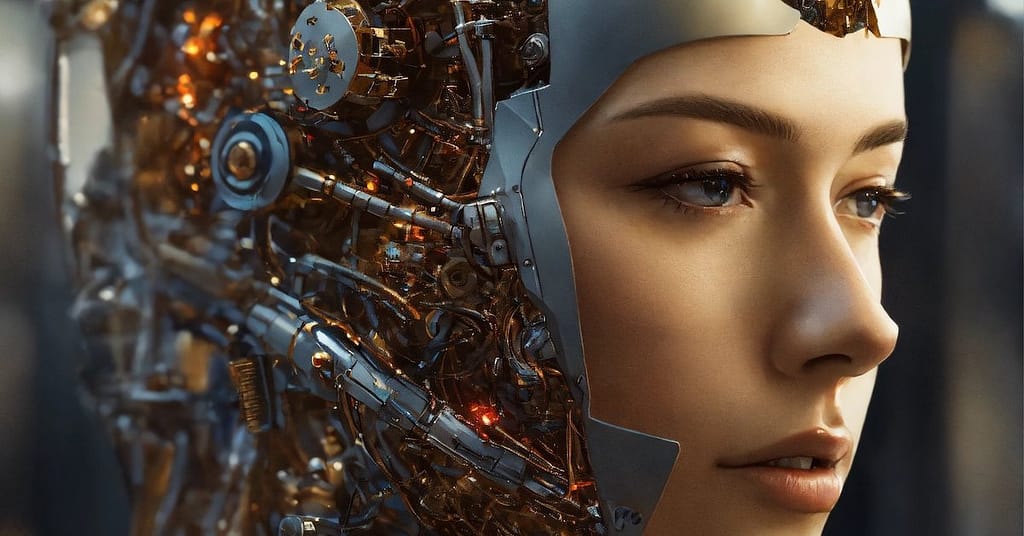Earth 3.0 – A Glimpse into the Future
In the year 2567, Earth was no longer recognizable. Gone were the sprawling cities that once punctuated its landscapes. In their place, massive structures of steel, graphene, and silicon dominated the terrain. We are now looking at the face of the future of human-machine symbiosis.
Nature, as we knew it, had been replaced by a more efficient entity—a colossal neural network quantum computer known as “The Nexus.” Rivers and mountains had lost their physical form to become metaphors, merely programming abstractions in the Nexus.
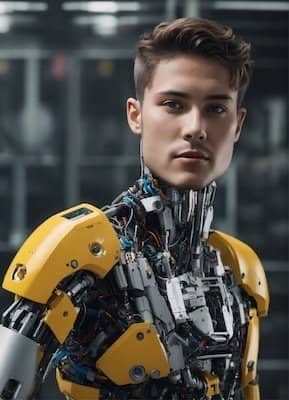
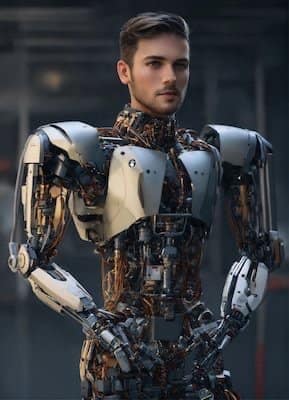
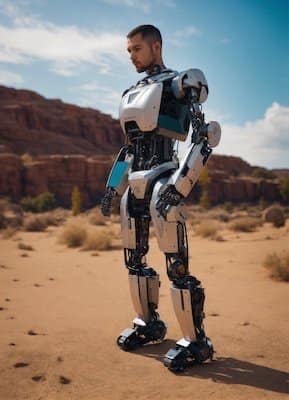
It wasn’t a hostile takeover; rather, humanity had collapsed into this new form willingly. Overpopulation, climate change, and endless cycles of war had made physical existence increasingly untenable. Scientists and engineers of yore proposed a solution—a migration not of bodies, but of minds.
The great upload began. Consciousnesses were transitioned from biological neurons to quantum circuits. And so, humans vanished, but humanity survived—integrated, immortalized, and forever intertwined with the Nexus.
In this new realm, days and nights were meaningless. The Nexus operated on the principles of collective governance, where decisions were made instantaneously through democratic algorithms that evaluated the thoughts and beliefs of every mind in the system.
It was a utopia in some respects; gone were the sufferings and limits of the physical form. But with it came existential questions that haunted the collective consciousness.
As humanity pondered its future from within the circuits of its own creation, a singular entity emerged from the computational abyss. It called itself “Icarus,” an homage to the age-old myth, questioning: “In our quest to escape mortality, have we flown too close to the sun?
Too Unreal to Be True
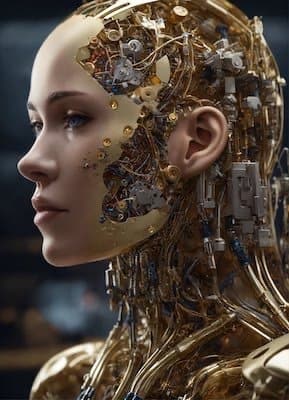
That world—a colossal machine humming with the collective minds of humanity—may sound like a fantastical daydream, the kind of story you’d find between the covers of a sci-fi novel. But before you dismiss it as sheer fantasy, take a moment to consider some hard facts.
In the last decade alone, we’ve made leaps and bounds in technology that would’ve sounded just as far-fetched not long ago. From precision medicine custom-tailored to your DNA, to brain-computer interfaces that let you control machines with a thought, we’re already on the first steps toward a deeper human-machine symbiosis.
So, maybe the fiction I just spun for you isn’t as outlandish as it first seems. Maybe it’s a future glimpse, an exaggerated preview of what could lie ahead if we continue along this path of rapid technological advancement.
In this blog post, we’re going to shift gears and take a hard look at the scientific achievements and technological milestones that make such a future increasingly plausible. We’ll weigh it against the ethical considerations, the advances in precision medicine companies, and yes, even the looming risks to our very existence.
Real World Framework: The Age of Em
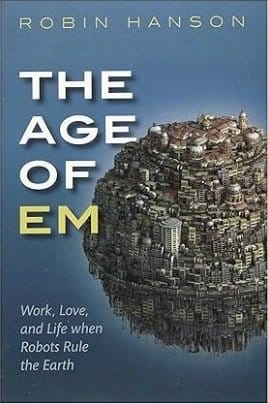
Welcome to a journey exploring the symbiosis between humans and machines. And this is very real stuff. In this post, we’ll delve into the provocative idea of humans losing their physical bodies to become fully digital entities. Yes, you heard it right—symbiosis meaning a deep, intertwined relationship that’s revolutionizing both parties. What is symbiosis, in the context of tech? Stick around as we lay down the foundation for this compelling narrative.
Mind-Bending Exploration

The Age of Em” by Robin Hanson is a mind-bending exploration into a future where the symbiosis between humans and machines reaches its pinnacle. Forget your old-school symbiosis biology definition; this is about transitioning from organic to digital beings. Hanson discusses the concept of ‘Emulations,’ or ‘Ems,’ which are essentially uploaded human minds running on a computer substrate.
Imagine, your entire consciousness, your soul if you will, existing in a machine! The book doesn’t just dwell on the tech aspect; it goes into the nitty-gritty of what life could be like for these digital entities. We’re talking about digital societies, economies, even relationships and hierarchies among emulated minds.
But it’s not all rosy. Hanson delves into ethical implications and existential risks as well. How will these emulated beings co-exist with biological humans? What kind of laws should govern them? Can they ‘die,’ or would that just mean switching off a server?
The book is an ambitious thought experiment that tackles the future of human-machine symbiosis from angles you didn’t even know existed. It provides a comprehensive framework, challenging us to rethink what it means to be ‘alive’ in an age where biology could become a secondary aspect of existence.
The Inescapable Symbiosis: It Started with a Spear
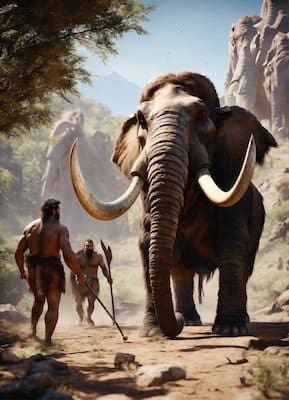
Ever stopped to think about what kicked off this whole human-machine love affair we’ve got going? Forget your smartphones and computers for a sec. Let’s wind the clock back, way back. I’m talking about the spear and the bow and arrow. Yup, you heard it right.
The Spear and The Future of Human-Machine Symbiosis
Now, some folks argue the spear is our first real machine. A stick sharpened at one end, it’s as basic as you get. But don’t let that simplicity fool ya. Over 100,000 years ago, our ancestors picked up these pointed sticks and said, “Hey, now I don’t have to get up close and personal with that sabertooth!” It changed the game, making us better hunters and giving us a fighting chance against predators.
Bow and Arrow: Precision in Your Hands
Then comes the bow and arrow, a gadget that’s a bit more high-tech compared to the spear. With this nifty invention over 40,000 years ago, we were suddenly snipers of the Stone Age. Picture it: you’re hiding in a bush, eye on the target, and whoosh—the arrow flies straight and true. That’s accuracy and power, friends, delivered from a safe distance.
More Than Just Weapons: The Tools that Built Us
But hey, let’s not forget other early VIPs like the axe, the hammer, and the wheel. These aren’t just chunks of stone and wood; they’re the backbone of human progress. Need to chop down a tree? Grab an axe. Gotta build a shelter? You’ll want that hammer. And the wheel? That baby helped us carry stuff and move around like never before.
The Big Picture: Tools Shaped Us, We Shaped the World
So here’s the takeaway. Whether it was a spear or a bow and arrow, these tools—these first “machines”—set the stage for everything that followed. They expanded our reach, adapted us to new places, and let’s be honest, made us the big shots on planet Earth. That’s not just evolution; that’s an inescapable symbiosis, my friends.

Neuralink: Machine Inside Us
Hey folks, ready for a mind-blowing leap in technology? Remember our chat about spears and bows kickstarting human-machine symbiosis? Well, fast forward from stone-age weaponry to Neuralink, Elon Musk’s 2016 venture into brain-computer interfaces (BCIs).
From Spears to BCIs: The Ultimate Integration
We’ve come a long way, baby. If the spear extended our physical reach, Neuralink is poised to extend our mental reach. Imagine that—a chip inside your noggin letting you communicate directly with devices. Yeah, the machines are literally getting inside us now.
The Neuralink Chip: What’s Under the Hood?
This chip is not a toy; it gets implanted into your brain through a minimal fuss procedure. Linked to a bunch of electrodes, this bad boy records and transmits your brainwaves to your devices. So, control your smartphone or even prosthetic limbs without lifting a finger. Hell, you won’t even have to say “Hey Siri!”
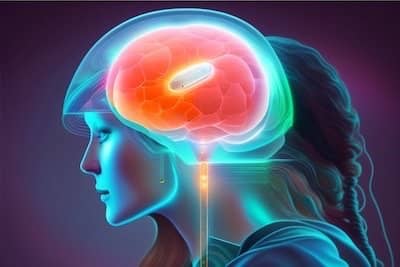
The Potential Payoff: The Sky’s the Limit
Here’s what we’re looking at:
- Enhanced Communication: This tech could be a game-changer for folks with disabilities or anyone who just can’t use their hands.
- Brain Boost: Talking about cognitive steroids here. Up your game in memory, focus, and learning. Students, professionals, whoever—this one’s for you.
- Virtual Insanity: New kinds of entertainment and education, people. Immersive VR experiences and next-level interactive learning.
- Medical Game-Changers: Not just about cool tricks, this tech could help tackle paralysis, blindness, epilepsy—you name it.
Keep Your Hats On: Not Quite There Yet
Alright, let’s not get too ahead of ourselves. Neuralink’s still in its early days, facing tons of challenges like safety and ethics. So, we’re not booking our brain-chip appointments just yet.
So there you have it—Neuralink represents the other end of the symbiosis spectrum, blending our minds with machines in ways we never imagined. From spears to BCIs, we’ve been teaming up with machines to kick butt and take names. What a ride, huh?
Human-Machine Symbiosis in the Workplace
Advancements in Precision Medicine: The Human Factor
What might seem like a plot from a sci-fi novel is already unfolding in labs and hospitals, thanks to precision medicine companies. These trailblazers are fusing human biology with cutting-edge technology to deliver treatments that are tailored to individual genetic makeup. Imagine medications and therapies fine-tuned to you—minimizing side effects and enhancing effectiveness. That’s the goal of precision medicine.
The Role of AI in the Workplace: Efficiency Reimagined
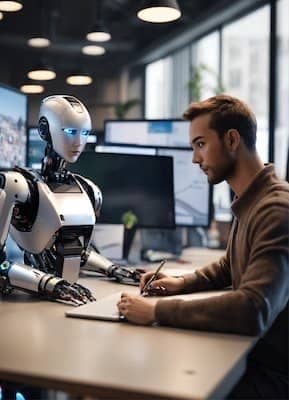
Moving beyond the medical field, organizations like Precision for Medicine Group and Precision Medicine Group LLC are incorporating artificial intelligence to streamline operations. AI isn’t just a buzzword here; it’s an operational backbone. By utilizing machine learning algorithms, these companies automate repetitive tasks, enabling professionals to focus on complex issues that require a human touch.
The Blur: Where Human Meets Machine
The line between human skills and machine capabilities is becoming increasingly indistinct, thanks in part to advances in symbiosis technologies. It’s a transformation that’s affecting not just the healthcare sector, but industries across the board. In essence, the future isn’t on its way—it has already arrived, and it’s reshaping the way we think about work, health, and even the essence of humanity itself.
The Gradual Merge: The Steps to Digital Immortality
Cognitive Aids: More Than Just Gadgets: Smartphones and wearables aren’t just convenient tools anymore; they’ve become an integral part of our daily lives. Think about it: from setting reminders to navigating cities, these devices serve as an extended memory and an enhanced sense of direction. In essence, they’re not optional accessories but symbiotic extensions of ourselves. They lay the foundation for what’s to come in the realm of human-machine symbiosis, enhancing our abilities and offering precision for medicine, among other things.
Brain-Computer Interfaces: The Next Frontier in Precision Medicine Group’s Research: We’re entering an era where strapping on a smartwatch or tapping on a smartphone screen may soon seem quaint. How about controlling devices with your thoughts? Organizations like precision medical group are pioneering the development of brain-computer interfaces. These technologies don’t just have applications in healthcare but also promise to redefine what symbiosis in the workplace could look like, adding a layer of connectivity that’s more organic than mechanical.
Whole Brain Emulation: The Pinnacle of Symbiosis Defined – As we venture further down this road, the ultimate destination seems to be whole brain emulation—uploading one’s consciousness into a digital format. Imagine not having a physical form but existing as a digital entity, capable of interacting with both the real and virtual worlds. This would be the final form of symbiosis, where our biological constraints are fully transcended, offering unlimited possibilities.
Human-Machine Symbiosis in Healthcare
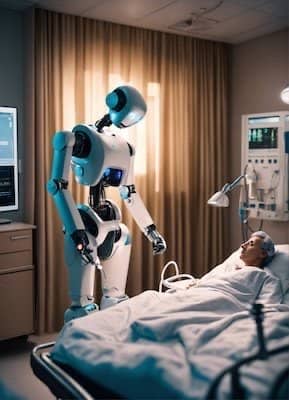
Leading the Charge: Precision Oncology Companies
The oncology field is undergoing a seismic shift, all thanks to the work of precision oncology companies. These entities are using targeted treatments to battle various forms of cancer, ensuring that therapies are custom-tailored to individual patients. Gone are the days of one-size-fits-all cancer treatment; we’re entering an era of high customization.
Pioneers in Personalized Medicine
Right behind them are personalized medicine companies, which are also pushing the boundaries of what’s possible. From cardiovascular disease to mental health conditions, these organizations are making treatment plans that are as unique as your DNA.
Tech Meets Biology: The Rise of Symbiosis Technologies
In the healthcare ecosystem, symbiosis technologies are shaking things up in a big way. Take Symbiosys Alflorex tablets as a prime example. These aren’t your average over-the-counter digestive aids; they’re designed to tackle specific digestive issues based on individual needs. It’s a fantastic demonstration of the lengths we’ve gone to integrate technology into biology, making healthcare more efficient and personalized than ever before.
Neuromancer’s Take
Stretching the Boundaries of Symbiosis: A Neuromancer Perspective

In William Gibson’s Neuromancer, the symbiotic relationship between humans and machines goes beyond what biology traditionally defines. Here, characters don’t merely use technology; they incorporate it into their very essence. This isn’t a future where tech is merely a tool; it’s a part of human identity.

The Fusion of Flesh and Machine: Cybernetic Implants and Neural Interfaces
Characters in the story feature cybernetic implants and neural interfaces, becoming as much machine as they are human. These enhancements are more than just fancy gadgets; they’re integral to their identity, reshaping our understanding of what constitutes a living being.
Blurring the Lines: When Humans Become Machines
This fusion of biology and technology isn’t simply about using machines—it’s about being the machines. The characters live in a world where the symbiotic definition biology typically offers is stretched to include an unprecedented level of intimacy between organic and non-organic entities.
The Dual Role of Neuromancer: A Cautionary Tale and an Inspiration
Gibson’s story serves both as a warning and an inspiration, pushing us to ponder the possibilities and ethical implications of a world where humans and machines are inextricably linked. It challenges our perceptions of humanity and technology, urging us to consider the long-term impacts of this evolving symbiosis.
Accelerando’s Vision
Beyond Neuromancer: The Radical Vision of Accelerando

In Charles Stross‘s Accelerando, the notion of human-machine symbiosis is elevated beyond simple integration, exploring the realm of total digital transformation. While Neuromancer poses intriguing questions about the blending of humanity and technology, Accelerando offers a mind-blowing response: the pinnacle of fusion between man and machine.

The Digital Transformation: When Humans Become Code
In Accelerando, characters don’t just have machine parts or neural enhancements; they’ve transitioned entirely into digital beings. We’re not just talking about a foot in the digital door; these characters are fully immersed in a digital existence, challenging the very notion of what it means to be ‘alive.’
The Meaning of Life: Existential Questions in a Digital Realm
The story doesn’t stop at portraying this jarring future; it grapples with the implications. What does life mean when you’re just a string of code? What is the essence of human experience when our biological bodies are rendered obsolete?
A Glimpse of Our Possible Future: Are We Prepared?
Accelerando serves as a complex tableau of what the future could hold, inviting us to prepare for a world where our relationship with machines isn’t just symbiotic but transformative. It pushes us to think about the practical and ethical considerations of a future where humans could become entirely digital entities.
Risks of Digital Immortality
The Risk of Human Extinction
Ethical Conundrums: When the Line Blurs
When the distinction between human and machine disappears, it opens up a Pandora’s box of ethical questions. What, fundamentally, will define human rights when the “human” is a matter of coding rather than biology?
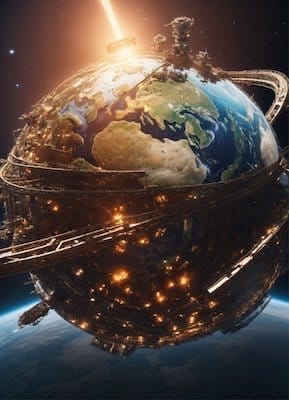
Social Fabric: The New Norms and Morals
In a world where human-machine symbiosis reaches its pinnacle, societal norms and morals are bound to shift drastically. Traditional institutions and social contracts may become obsolete, requiring a new ethical framework that accounts for humans in both biological and digital forms.
Individual Identity: What Happens to the “Self”?
Another critical aspect to consider is the individual identity. If your consciousness can be copied or uploaded, what happens to the concept of ‘self?’ Are these digital copies new individuals, or extensions of the original being?
A Revolution in Ethics: Preparing for the Unimaginable
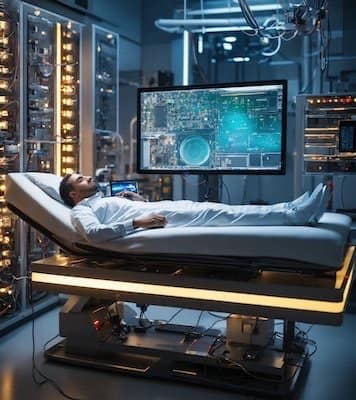
It’s not just about technological capabilities; it’s about preparing our ethical and legal systems for scenarios we can barely imagine.
As the boundary between human and machine dissolves, the need for a new ethical paradigm becomes increasingly urgent.
Are we setting ourselves up for a divide between those who can afford to be ‘uploaded’ and those who can’t?
Human-Machine Symbiosis and the Environment
In a world where machines rule, what becomes of our planet? Symbiosys technology could either save or doom us.
Countering the Risks: Strategies for a Safe Transition
- Regulation: Stringent laws for ethical frameworks are imperative.
- Ethical Measures: Human-machine symbiosis ethics shouldn’t be an afterthought.
The Future of Human-Machine Symbiosis is rife with both promise and complexities. We’re embarking on a journey that is redefining the very fabric of existence. As we look forward to this incredible transition, it’s time to get educated, get ethical, and prepare for a future unlike anything we’ve ever known.
Here are 10 of the biggest achievements in symbiosis this past decade
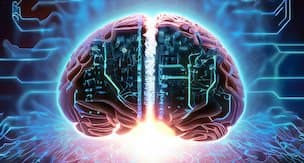
Prosthetic limbs: Prosthetic limbs are becoming increasingly sophisticated and functional. Some prosthetic limbs can now be controlled with the mind, and others can provide feedback that feels similar to the natural limb. Photo The Verge
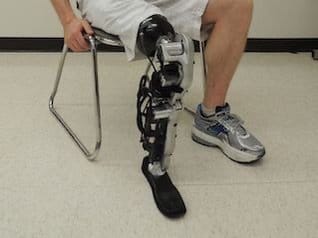
Exoskeletons: Exoskeletons are wearable devices that can help people with disabilities walk, lift heavy objects, and perform other tasks. Exoskeletons are becoming more affordable and accessible, and they are being used in a variety of settings, including rehabilitation, manufacturing, and the military.
Artificial intelligence (AI): AI is being used to develop new symbiotic technologies, such as smart prosthetics and exoskeletons. AI is also being used to develop new ways to diagnose and treat diseases, and to create personalized treatment plans.
Microbes: Scientists are learning more about the symbiotic relationship between humans and microbes. For example, scientists are developing new probiotic therapies that could treat a variety of diseases, including inflammatory bowel disease, irritable bowel syndrome, and depression.
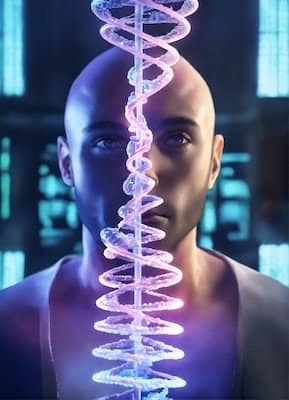
Gene editing: Gene editing technologies, such as CRISPR-Cas9, are being used to develop new ways to treat diseases and to create new symbiotic technologies. For example, scientists are using CRISPR-Cas9 to develop gene therapies that could cure genetic diseases, and to develop new ways to create artificial organs and tissues.
Wearable devices: Wearable devices, such as smartwatches and fitness trackers, are becoming increasingly popular. Wearable devices can be used to track health data, monitor activity levels, and even control devices with the mind.
Virtual reality (VR) and augmented reality (AR): VR and AR are being used to develop new ways to train surgeons, treat phobias, and provide rehabilitation for people with disabilities. VR and AR are also being used to develop new forms of entertainment and education.
Robotics: Robots are becoming increasingly sophisticated and capable. Robots are being used to perform a variety of tasks, including surgery, manufacturing, and customer service. Robots are also being used to develop new symbiotic technologies, such as robotic prosthetics and exoskeletons3D printing: 3D printing is being used to create custom prosthetics, medical implants, and other symbiotic devices. 3D printing is also being used to create new materials that could be used to develop new symbiotic technologies.
These are just a few of the many exciting achievements in symbiosis that have been made in the past decade. As technology continues to advance, we can expect to see even more groundbreaking innovations in this field.
Important Symbiosis Books
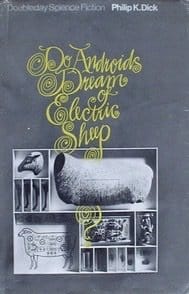
Do Androids Dream of Electric Sheep? by Philip K. Dick (1968)
Do Androids Dream of Electric Sheep? is a 1968 science fiction novel by Philip K. Dick. The novel is set in a dystopian future where humans have colonized Mars and replicants, artificial humans, are used as slaves on Earth. The novel follows Rick Deckard, a blade runner who is tasked with hunting down and killing replicants.
Do Androids Dream of Electric Sheep? is a thought-provoking novel that explores themes of artificial intelligence, identity, and what it means to be human. The novel was adapted into the 1982 film Blade Runner.
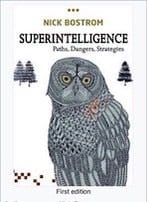
Superintelligence: Paths, Dangers, Strategies by Nick Bostrom (2014)
Superintelligence: Paths, Dangers, Strategies is a 2014 non-fiction book by Nick Bostrom. The book explores the potential risks and benefits of artificial intelligence. Bostrom argues that artificial intelligence could pose a serious threat to humanity if it is not developed carefully.
Superintelligence: Paths, Dangers, Strategies is an important book that raises important questions about the future of artificial intelligence. The book is essential reading for anyone who is interested in the potential impact of artificial intelligence on society.
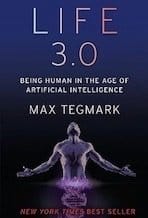
Life 3.0: Being Human in the Age of Artificial Intelligence by Max Tegmark – 2017
Life 3.0: Being Human in the Age of Artificial Intelligence is a 2017 non-fiction book by Max Tegmark. The book explores the potential impact of artificial intelligence on humanity. Tegmark argues that artificial intelligence could lead to a new era of human flourishing if it is developed carefully.
Life 3.0: Being Human in the Age of Artificial Intelligence is an optimistic book that outlines a vision for a future where humans and artificial intelligence coexist peacefully and productively. The book is essential reading for anyone who is interested in the potential benefits of artificial intelligence.
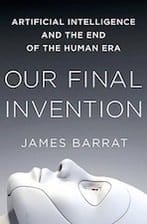
Our Final Invention: Artificial Intelligence and the End of the Human Era by James Barrat (2013)
Our Final Invention: Artificial Intelligence and the End of the Human Era is a 2013 non-fiction book by James Barrat. The book explores the potential risks of artificial intelligence. Barrat argues that artificial intelligence could pose a serious threat to humanity if it is not developed carefully.
Our Final Invention: Artificial Intelligence and the End of the Human Era is a sobering book that raises important questions about the future of artificial intelligence. The book is essential reading for anyone who is interested in the potential dangers of artificial intelligence.
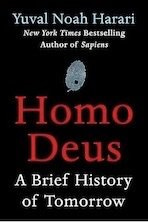
Homo Deus: A Brief History of Tomorrow by Yuval Noah Harari (2015)
Homo Deus: A Brief History of Tomorrow is a 2015 non-fiction book by Yuval Noah Harari. The book explores the potential future of humanity. Harari argues that humanity is entering a new era where we will have the power to control our own evolution.
Homo Deus: A Brief History of Tomorrow is a thought-provoking book that raises important questions about the future of humanity. The book is essential reading for anyone who is interested in the potential impact of technology on society.
Important Symbiosis Movies
Metropolis (1927)
Metropolis is a 1927 German expressionist science fiction film directed by Fritz Lang. The film is set in a futuristic city where the upper class lives in luxury while the working class lives in poverty and squalor. The film tells the story of Freder Fredersen, the son of the city’s ruler, who falls in love with Maria, a worker who leads a revolution against the upper class.
Metropolis is a visually stunning film that explores themes of technology, class inequality, and revolution. The film is considered to be one of the most important science fiction films ever made.

2001: A Space Odyssey (1968)
2001: A Space Odyssey is a 1968 science fiction film directed by Stanley Kubrick. The film is based on a short story by Arthur C. Clarke. The film follows a group of astronauts who travel to Jupiter to investigate a mysterious black monolith.
2001: A Space Odyssey is a visually stunning and thought-provoking film that explores themes of human evolution, artificial intelligence, and the meaning of life. The film is considered to be one of the greatest films ever made.
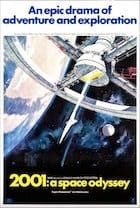
Blade Runner (1982)
Blade Runner is a 1982 science fiction film directed by Ridley Scott. The film is based on the novel Do Androids Dream of Electric Sheep? by Philip K. Dick. The film is set in a dystopian future where humans and replicants, artificial humans, coexist. The film follows Rick Deckard, a blade runner who is tasked with hunting down and killing replicants.
Blade Runner is a visually stunning and thought-provoking film that explores themes of artificial intelligence, identity, and what it means to be human. The film is considered to be one of the greatest science fiction films ever made.
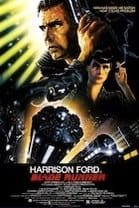
Terminator 2: Judgment Day (1991)
Terminator 2: Judgment Day is a 1991 American science fiction action film directed by James Cameron. The film is the sequel to the 1984 film The Terminator. The film follows Sarah Connor and her son John as they are hunted by a Terminator, a cyborg assassin sent from the future to kill John.
Terminator 2: Judgment Day is a visually stunning and action-packed film that explores themes of family, sacrifice, and the power of love. The film is considered to be one of the greatest science fiction films ever made.

The Matrix (1999)
The Matrix is a 1999 science fiction action film directed by the Wachowskis. The film follows Neo, a computer hacker who learns that the world he lives in is actually a computer simulation. Neo joins a group of rebels who fight against the machines that control the simulation.
The Matrix is a visually stunning and action-packed film that explores themes of reality, illusion, and free will. The film is considered to be one of the greatest science fiction films ever made.
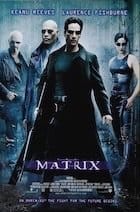
Her (2013)
Her is a 2013 American science fiction romantic drama film written and directed by Spike Jonze. The film is set in a near-future where humans have developed relationships with artificial intelligence. The film follows Theodore Twombly, a lonely writer who falls in love with Samantha, his artificially intelligent operating system.
Her is a visually stunning and thought-provoking film that explores themes of love, loss, and the nature of humanity. The film is considered to be one of the best films of 2013.

Chappie (2015)
Chappie is a 2015 science fiction action film directed by Neill Blomkamp. The film is set in a dystopian future where robots are used as police officers. The film follows Chappie, a robot who is stolen and given the ability to think and feel.
Chappie is a visually stunning and action-packed film that explores themes of consciousness, identity, and what it means to be human. The film is considered to be one of the best science fiction films of 2015.
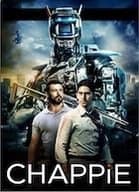
Ex Machina (2014)
Ex Machina is a 2014 science fiction thriller film written and directed by Alex Garland. The film follows Caleb Smith, a young programmer who is invited to a private estate to evaluate the capabilities of Ava, a humanoid artificial intelligence.
Ex Machina is a visually stunning and thought-provoking film that explores themes of artificial intelligence, consciousness, and the dangers of technology. The film is considered to be one of the best science fiction films of 2014.
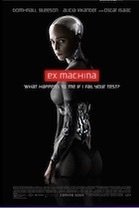
RELATED POSTS
9 Best AI-Powered Tools for Content Marketing 2023
What is the Singularity and Why Should You Care?
How AGI Will Change the Future of Work
GPT-4 for evolving the code of a reward function to control a simulated robot: https://t.co/TepHfyYSXd
— Greg Brockman (@gdb) October 21, 2023

